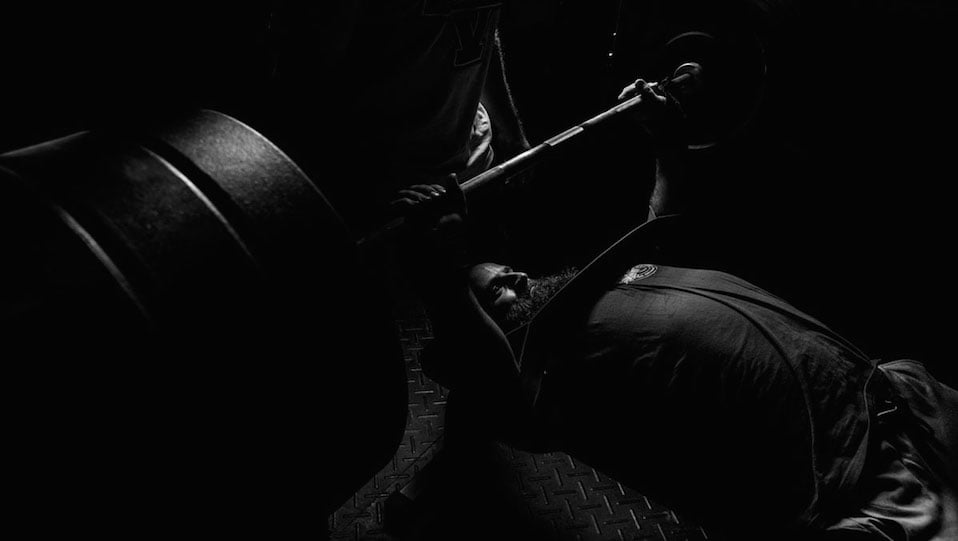
Articles / 29.12.16
By Alex Babin
Whether you’re a believer in the role of the lats for benching or not, you simply cannot ignore the importance of a strong upper back. Throughout all my years of coaching, I have seen way too many people completely stop benching because of shoulder discomfort or even get injured due to bad technique. Those injuries are often caused by a lack of stability/strength in the upper back and the inability to keep the shoulder blades retracted and squeezed back & hard against the bench throughout the entire lift.
Here’s a cool & VERY specific upper back exercise to add to your tool box to improve your performance on the bench press AND most importantly, save your shoulders and add longevity to your benching days.
If you like this exercise and would like to see more cool “shoulder saver” exercises for bench pressing click on this link:
What is it good for?
- Strengthening the upper back specifically for bench pressing.
- Learning how to keep the shoulder blades squeezed back and hard on the bench while pressing it up.
- Improving bench press performance.
- Prevent shoulder discomfort or injury.
How is it done?
- Set up a band (I use the pro Average Band from Elite FTS) doubled up around the top of a squat rack (7’ high chin up bar in my case) and place a barbell through both ends of the band. The resistance of the band should allow for about 15-20 iso-hold reps.
- With the barbell hanging from the band, position your body on the bench so the barbell is aligned with your shoulders. (I put a 45lbs plate on my chest so the band tension wouldn’t pull me up out of position). Extend your t-spine, retract your shoulder blades, contract your abs, and anchor your feet down on the floor as you should while bench pressing (but more on that in another article).
- Pull the bar down hard & fast to the part of your chest that is the highest (closest to ceiling), hold it there & squeeze your back as hard as possible for 2 seconds before bringing it back up.
- To make this exercise as specific to the bench press as possible, make sure you never release the upper back tension when bringing the bar back up. Keep the shoulder blades retracted throughout the whole set, this will have a much better carry-over to the bench press. Specificity is the name of the game here.
What do you need to avoid?
- Do not protract the shoulder blades as you would on a regular back exercise, keep the scapula squeezed back throughout the lift.
- Do not allow your chest to dip down. Focus on keeping the upper back as tight as possible and the chest high.
- Avoid changing your bench press setup, you want this exercise to look exactly like the bench press. Keep bar/wrist/elbow alignment, keep chest high, pull the bar to the highest portion of your chest, drive your feet into the ground, contract your abs and pull away.
- Avoid losing tension. Don’t let the band throw you out of balance, if you’re on the lighter bodyweight side but have a strong back, don’t hesitate to put some weight on your chest to keep you down.
When and how to do this?
This is a light accessory exercise, where you will place it in your training session will depend on the importance of that specific weakness. The weaker the upper back and the more difficult it is for you to keep your shoulder blades squeezed back when benching, the higher up in priority it is and the more volume you will need.
You can use it on your back training days to add volume OR on your bench training days to focus on neuro-muscular activation and practice this motor pattern.
You might also use it as an activation exercise before every session or even a filler exercise between 2 pressing movements.
Set/reps:
Keep the reps high and make sure to HOLD the isometric position at the bottom on every rep. The number of sets will again depend on your own need for it but I do 3-5 sets of 15-20 reps on my back training days since this is not specifically a big weakness of mine.
— AB